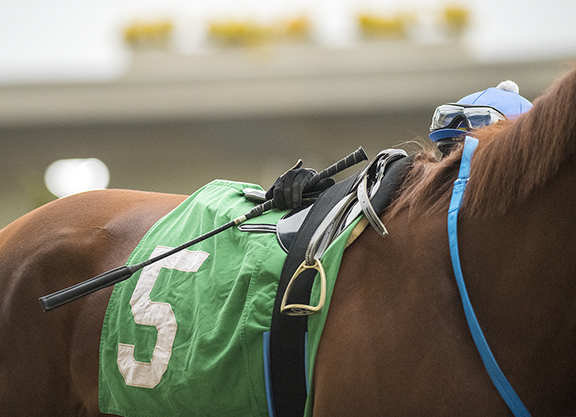Jockeys will be prohibited from using the riding crop more than two consecutive times before being required to wait three full strides in order to give the horse a chance to respond under an expanded Model crop Rule adopted by the Association of Racing Commissioners International (ARCI) last week.
The modified rule tightens restrictions already in place but clearly says that any use of the crop to “urge” the horse must be limited. The new RCI Model Rule continues to rely upon the judgement of the Stewards as to when to impose sanctions, but is clear that using the crop more than two consecutive times or not waiting three full strides before reuse is to be regarded as a rule violation.
The RCI did not include an overall strike count in the actual rule but did approve corresponding guidelines to advise officials that use of the crop for more than six strikes during the race is something to be assessed.
“If our accredited Stewards cannot judge when a jock has crossed the line then perhaps they should not be in the stand,” said former jock and racing official Doug Moore who is Executive Director of the Washington State Racing Commission and Chair of the RCI Rider and Driver Safety Committee. “If the officials fail to exercise their responsibility in this matter then the feeling at the meeting was that the matter must be reviewed up top in assessing someone's job performance and deciding whether to keep them on.”
“Several years ago we changed the riding crop requirements to rely upon poppers which provide an audible stimulation to the horse in addition to the visual one of showing the horse the crop,” said RCI Chairman Tom Sage. “As a result, it is extremely rare to find a horse with evidence of crop misuse coming in off the track. In helping to protect the horse we may have created an opposite impression with the public as they now hear the noise coming from the crops.”
RCI President Ed Martin noted that testimony from the Jockey Club as to public perception was taken to heart and the regulators found it compelling to help address that by defining clearly what the chance to respond should be.
“The image of someone wailing away on a horse coming down the stretch is not a good one for a sport struggling to assert a positive image. But controlled and limited use with three full strides to respond was something the regulators believed would help mitigate that,” he said.
Not a subscriber? Click here to sign up for the daily PDF or alerts.






